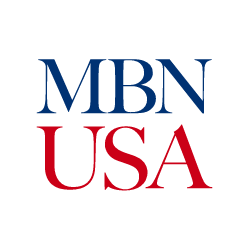Shaping consumer trends with strategic marketing, innovation and social responsibility
By Ryann Brooks
Major players in the consumer goods industry — such as The Procter & Gamble Co. or P&G, Nestlé USA Inc. and The Kraft Heinz Co. — are strategically investing in marketing, product innovation and social responsibility to drive growth and adapt to evolving consumer demands.
These companies are focusing on expanding key categories — particularly those that resonate with female consumers, who often lead household purchasing decisions.
Procter & Gamble’s strategic focus on women-centric categories
P&G has significantly increased its marketing spend in 2024, with a 14% year-over-year boost in the third quarter alone. This investment is part of a broader strategy to drive volume growth by expanding categories that attract new consumers.
“Fiscal year 2024 was another year of strong results for P&G,” said Jon Moeller, chairman of the board, president and chief executive officer, in a July 30 media release. “As we look forward to fiscal 2025, we expect to deliver strong organic sales growth, earnings per share growth and free cash flow productivity — each in line with our long-term growth algorithm. We remain committed to our integrated strategy: a focused product portfolio of daily use categories where performance drives brand choice, superiority (of product performance, packaging, brand communication, retail execution and consumer and customer value), productivity, constructive disruption and an agile and accountable organization — all aimed at delivering sustainable, balanced growth and value creation.”
P&G’s annual report highlights the importance of several key categories dominated by female consumers. Fabric & Home Care leads with 36% of net sales, followed by Baby, Feminine & Family Care at 24% and Beauty at 18%. These segments reflect P&G’s focus on products catering to women’s needs at various life stages — from household care to personal beauty and health.
Nestlé’s focus on food, wellness and social impact
Nestlé — another global consumer goods giant — is channeling its resources into areas where food can have the most significant impact. The company’s business is organized around several key categories that align with consumer health, wellness and convenience trends.
In 2024, Nestlé’s largest segment is Powdered and Liquid Beverages, generating $26.78 billion in sales. This segment includes products like coffee and nutritional drinks that cater to a growing demand for convenient, health-conscious options. Pet Care — a category with a significant overlap with female consumers, especially pet owners — contributes $20.3 billion to Nestlé’s sales.
Nutrition and Health Science — which brings in $16.54 million — is another critical area of focus. This category reflects the increasing consumer interest in health and wellness products, including those that support specific dietary needs. Prepared Dishes and Cooking Aids account for $12.64 billion, while Milk Products and Ice Cream generate $11.88 billion — catering to the demand for both indulgence and nutrition.
Beyond its financial performance, Nestlé is committed to social impact — particularly through its income accelerator program, aimed at improving the livelihoods of cocoa-farming families. Since its launch in 2022, this program has benefited 10,000 cocoa-farming families in Côte d’Ivoire and will expand to Ghana in 2024. The program supports child education, good agricultural practices, agroforestry and diversified incomes — with promising results such as a 20% increase in cocoa farm productivity and an 8% rise in school enrollment rates.
“Initial results from a report by third-party KIT Royal Tropical Institute are promising, while also informing program improvements,” said Darrell High, head of Nestle’s Cocoa Plan in Switzerland. “Pruning has increased cocoa farm productivity by more than 20%, on average. School enrollment rates have risen by 8%, reaching 83%. Women are more involved in decision-making, which has improved the allocation of family resources. Cash incentives are primarily used where it matters most — first and foremost for schooling.”
This initiative reflects Nestlé’s broader commitment to gender equity, as the company employs over 46% women in management positions.
Kraft Heinz’s innovation, partnerships and commitment to healthy living and diversity
Kraft Heinz is making significant strides in aligning its business practices with consumer trends, particularly through innovation, health initiatives and social responsibility. The company’s focus on its environmental, social and government goal of Healthy Living & Community Support is evident in its nutrition efforts, achieving 95% of the target of reducing total sugar content in its products by over 60 million pounds. This goal aligns with the growing consumer demand for healthier food options, especially among women who often make nutritional decisions for their families.
Kraft Heinz is equally committed to diversity and inclusion. The company has set a goal to have women fill 50% of global management positions by 2025 and to ensure that people of color comprise 30% of U.S. salaried positions. Currently, women hold 41% of management roles, and people of color represent 28% of salaried positions in the U.S. These initiatives reflect Kraft Heinz’s recognition of the importance of diverse leadership in driving innovation and meeting the needs of a diverse consumer base.
In 2024, Kraft Heinz also demonstrated its commitment to innovation through a significant increase in patent activity. The company’s patents total 9,063 globally, with 4,466 currently active. Notably, the American food giant saw a 299% increase in patent filings in Q1 2024 compared to Q4 2023, and a 259% increase in patent grants in February 2024 compared to the previous quarter. Nearly 20% of the patents filed and 23% of the patents granted in Q1 2024 were related to packaging, highlighting the company’s focus on innovative and sustainable packaging solutions.
In a creative leap that highlights its marketing innovation, Kraft Heinz has partnered with Kate Spade New York® to launch a limited-edition collection for summer 2024. This unexpected yet fitting collaboration brings together HEINZ’s iconic ketchup red and Kate Spade’s playful, colorful style. The capsule collection features totes, pouches, small leather goods, ready-to-wear tees, footwear, keychains, phone cases and more — all designed to elevate summer’s special moments.
“With this new line of ‘condiment couture,’ we’re excited to partner with the iconic Kate Spade New York brand to pay homage to the beloved HEINZ brand. Kate Spade New York shares many values with HEINZ — from creating products of the highest quality that are expertly crafted by masters and leave no detail untouched, to exhibiting true devotion to our fans,” said Megan Lang, global head of brand communications & creativity. “In return, both brands have incredibly loyal fanbases that transcend generations.”
Financial performance and strategic investments
P&G’s financial results for 2024 show a company well-positioned to capitalize on its strategic investments. The company reported net sales of $84.0 billion, up from $82.0 billion in 2023. Operating income rose to $18.5 billion, reflecting the effectiveness of P&G’s marketing and product strategies.
Nestlé, too, demonstrates strong financial performance across its key segments. The company’s diversified portfolio allows it to meet various consumer needs, from everyday essentials to specialized nutrition. Confectionery, with $8.75 billion in sales, and Water, with $3.56 billion, round out Nestlé’s offerings, catering to consumers’ desire for both indulgence and hydration.
Kraft Heinz’s focus on health, diversity, innovation and creative partnerships complements its financial strategy. By aligning its product offerings with consumer health trends, promoting inclusive practices and driving innovation through a robust patent portfolio and collaborations — like the one with Kate Spade New York — the company is well-positioned to attract a broad and diverse consumer base.
The role of innovation and social responsibility in driving growth
Both P&G and Nestlé emphasize the importance of innovation in sustaining growth and meeting consumer expectations. P&G’s approach combines pricing strategies with continuous innovation, ensuring that its products remain superior in the eyes of consumers. This focus on “superiority” has helped the company maintain its market position — even in categories that have seen volume declines due to higher pricing.
Nestlé’s commitment to social responsibility — particularly through its income accelerator program — underscores the importance of aligning business growth with positive social impact. By supporting cocoa-farming families and prioritizing sustainable practices, Nestlé is not only improving livelihoods but also strengthening its brand reputation among increasingly socially conscious consumers.
Kraft Heinz’s efforts in reducing sugar content, promoting diversity, driving innovation through an expanded patent portfolio and engaging in creative collaborations — such as the one with Kate Spade New York — demonstrate its responsiveness to consumer demands for healthier products and more inclusive business practices.
These initiatives are likely to resonate with a wide audience, particularly women who are key decision-makers in households.





